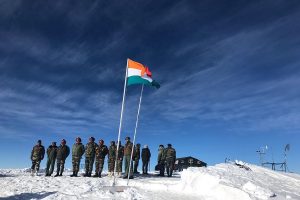The media fraternity in Northeast India, like the rest of the country, is observing National Press Day today. Media persons in the region are sure to shower respect on all those who contributed to the growth of the Press Council of India as it presides over a free and responsible press in the largest democracy of the world. That said, one needs to introspect over diminishing public support as repeated allegations surface against media houses.
It would not be an exaggeration to claim that among all the press or media councils functioning across the world, the PCI has emerged as a unique entity that exercises authority while also safeguarding the independence of the press in this populous country. It has done so since its constitution on 4 July 1966 as an “autonomous, statutory, quasi-judicial” body.
Advertisement
It was, in fact, Mahatma Gandhi who articulated the concept of selfregulation upon which press councils or similar bodies were founded and are still functioning. Under the noble notion, the sole aim of journalism should be service to humanity. As newspapers possess great power, they should be controlled from within, but irresponsible exercises of media power would always invite condemnation.
But with the emergence of television news channels and lately, digital media outlets, the situation has turned murky for the print media. Unfortunately, both TV channels and social media are yet to be brought under the purview of the PCI. India has over 400 privately-owned, free-toair news channels to which the North-east contributes nearly 15. Millions of people in the region remain glued to local news channels because of their speed, lucidity, and entertaining nature.
The growth in alternative media, as the country has nearly 500 million smart-phone users leaving aside millions of other dedicated Internetusers, has lately posed a serious threat to both print and electronic (television and radio) media outlets. Because of extreme speed, being cheaper and its participatory nature, social media has turned out to be a giant entry point by breaking most barriers faced by mainstream media.
Recently, the image of North-east Indian media was shaken as a “payment list” constituting lakhs of rupees to certain houses and scribes went viral on social media. The development started with a sheet of paper, written as confidential, depicting a list of beneficiaries among a few news channels and newspapers. Even though millions of social media users came to know about it, mainstream media remained silent over the matter.
Claimed to be prepared on 21 October this year, the unauthenticated list mentions a number of satellite news channels (Pratidin Time, Assam Talks, Prag News, News Live and NE Live) and newspapers (Niyamiya Barta, Jugasankha, Dainik Prantajyoti, Navabarta Prasanga, Samayik Prasanga, etc) along with a press association as primary beneficiaries in the form of monthly contributions (read protection amount) by coal-carrying truckers. Sanjib Jaiswal (presumably the owner of news channel DY365) and Manoj Nath (president of Gauhati Press Club) among a few others, along with Cachar and Karimganj police (in Assam) and Meghalaya police personnel, were named as beneficiaries involving illegal tax collections to the tune of crores of rupees. The coal mafia-media nexus issue has already been reported by many digital media outlets inside and outside the region.
“The paper was made viral on social media, including on influential WhatsApp groups, which multiplied the number of viewers within a short span of time even though mainstream media ignored the revelation,” said Journalists’ Forum Assam in a statement, adding that all the media persons named in the list should clarify their stand effectively. Also, the North-eastern media fraternity should stand united and react to the development collectively as well as urgently.
The Press Club of Assam, while expressing serious concern over the debates on illegal payments by the coal mafia to a section of media houses and scribes based in Guwahati and Silchar, demanded a high-level probe to investigate the matter. Urging Assam chief minister Sarbananda Sonowal (also in charge of the home portfolio), the registered press club pointed out that the enquiry becomes necessary for maintaining the image of the mainstream media and the state government in Dispur.
In another recent development, an activist and journalist named Biswajit Nath sent a memorandum to Prime Minister Narendra Modi, requesting his personal intervention to ask Dispur to conduct an authentic probe into the coal mafia’s illegal monetary connection with a section of media outlets and individuals. He argued that since the Sonowal-led government routinely claims to maintain a policy of zero-tolerance to corruption, it should punish the culprits according to the law.
Even after such a hue and cry was raised, the media houses concerned have not clarified their position. Showing an indifferent attitude to their collective credibility, they simply killed the news even though the issue remained in the public domain for weeks. While discussing media rights on this auspicious day for the press, should not the fraternity introspect over all the pertinent irregularities it may face?
The writer is the Guwahati-based special representative of The Statesman











